No matter what the object is, it’ll usually benefit from a coat of paint.
Whether you’re painting a car or boat to protect it from the elements, your house to keep it cool in summer, or your latest costume piece or miniature to add that perfect splash of color, 3D printing probably has a tool to assist you!
We’ve scoured the internet for useful prints to help you paint, so without further ado, here are some of the most useful painting helpers.
And if you find a model or two that you’d like to add to your painting setup but your 3D printer isn’t cooperating, check out Craftcloud. With manufacturers all over the world offering a variety of technologies, materials, and finishes, you’re bound to find exactly what you’re looking for!
Paint Cones
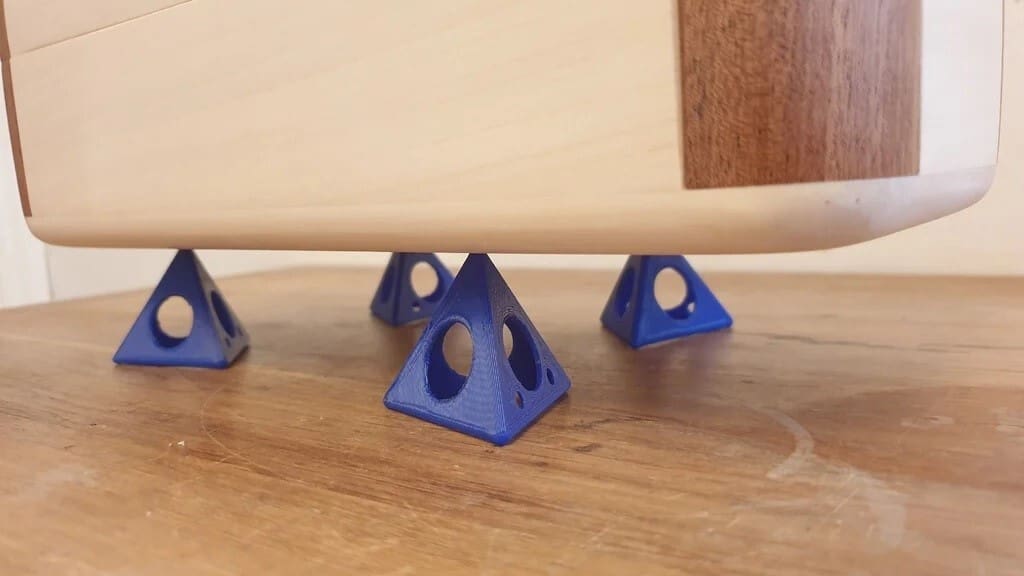
These triangular stand-offs are quick and easy to print, and they allow you to work much faster with large flat items. When painting, you usually have to let a side of the item completely dry before you can flip it over to coat the other side. As the contact patch for these stands comes to a rounded point, you can confidently turn your item knowing that the underside will still be able to dry with minimal or no marring of the paint surface.
Yes, there are hundreds of designs for these pointed stand offs out there. But this particular model is stackable for easy storage, is equilateral – meaning you don’t have to worry about getting all the pyramids in the same orientation –, and has screw holes for fixing the pyramid to a surface so that they don’t slide.
These print without supports and you can use a very coarse layer height, as they serve no aesthetic purpose.
- Who designed it? berbertpk
- How printable/popular is it? While so far only 1 make has been shared, the STL file has been downloaded over 4,000 times.
- Where to find it? Thingiverse
Paint Roller Cleaner
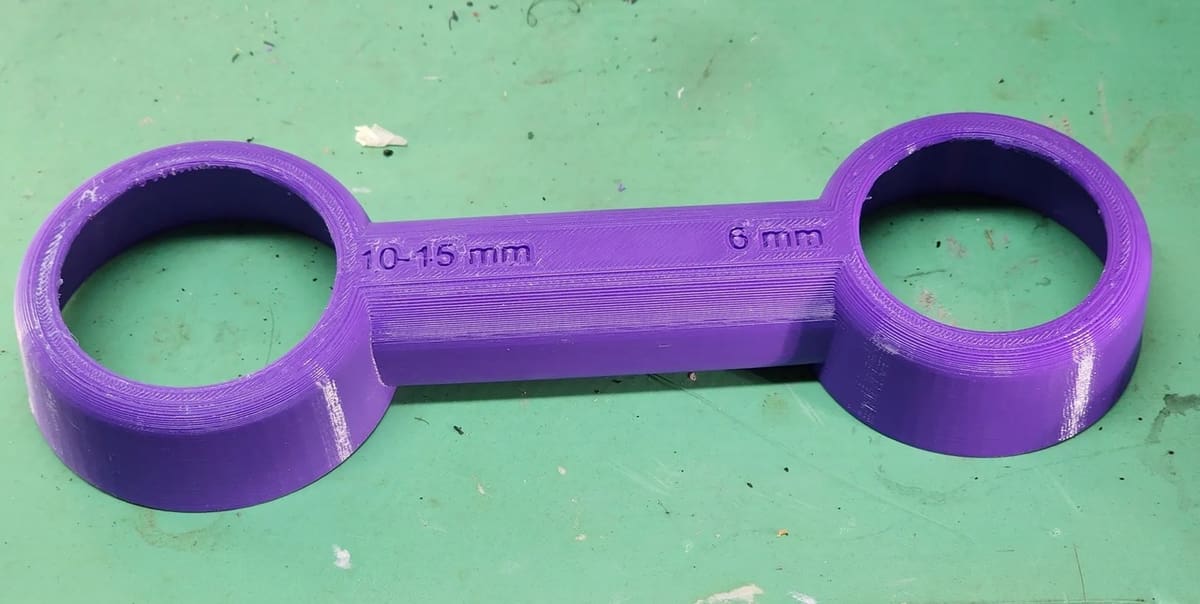
Cleaning your paint roller is a slow and arduous task, involving a lot of solvent (hopefully you’re using a water-based paint) and a lot of time.
The benefits of cleaning your rollers extend beyond just saving a bit of money though. As the creator of this model points out, a used roller holds more paint and doesn’t leave lint, both speeding up your job and reducing any chance of re-work.
Commenters have mentioned flipping the part upside down for printing to remove the need for supports. Most people use a high infill, but be aware that the handle interior is a void, not a volume. While not necessary, vapor-smoothed ABS would also make the tool easier to clean.
- Who designed it? mishkin2
- How printable/popular is it? With 121 makes and around 1,740 downloads combined from both sites, this model’s popularity is on the rise – and it’s easy to see why!
- Where to find it? Printables, Thingiverse
Paint Mask Roller
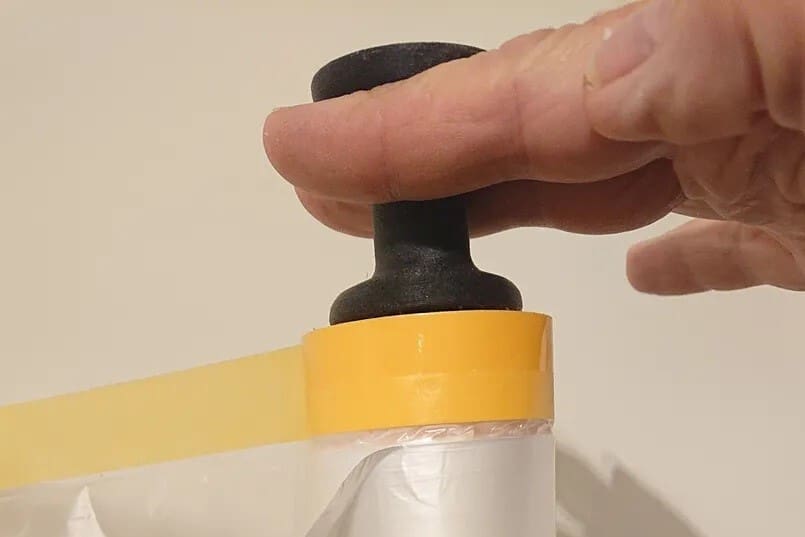
Spray painting a large item, such as a room in your house or a part of a car (or a huge velociraptor head), necessitates masking off regions you don’t want painted. Just imagine you spray your car a beautiful British Racing Green, only to discover that the windows and windshield were also painted.
This invention will help you mask off areas and focus on getting it right rather than wrestling with a large roll of edge tape. The designer opted for a 0.2-mm layer height, 10% infill, and two walls to make his model.
- Who designed it? bstolk
- How printable/popular is it? Even though this model isn’t hugely popular, with just over a handful of downloads at time of writing, we think it’s worth a look.
- Where to find it? Printables
Foamless Sturdy Paint/Liquid Mixer
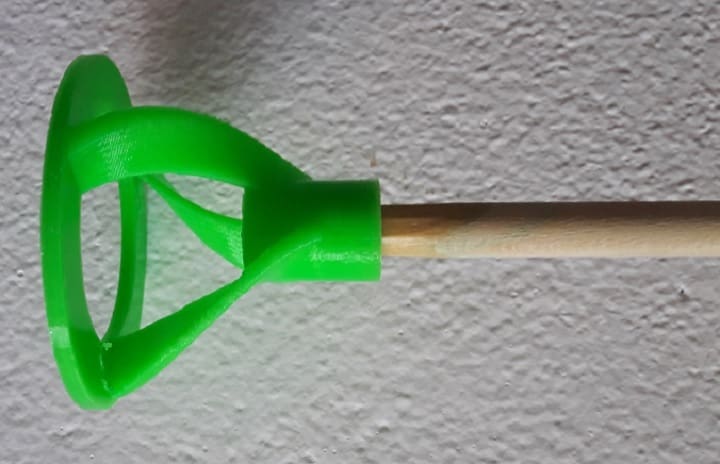
Any paint that doesn’t come in a tube needs to be mixed. With small paint pots or with the special equipment found in paint stores, this can be done by shaking. Once you get your paint home or back to your workshop or jobsite, you’re going to need to mix it.
While you can literally just stir it with a stick (using a rising figure of an eight pattern to lift the pigment from the bottom and distributing it through the substrate), it’s easier to use a power drill and a stirring attachment. The problem is, most attachments also tend to drive a lot of air into the mix, which creates bubbles in your paint. According to Kansai Altan, this can lead to pin holes in the coating.
This attachment stirs the paint without much cavitation and should (in theory) give you a longer lasting paint finish. While it may look complex, it prints easily due to the gradual geometry. That said, it does need some supports for the shaft connector. Some of the makers who’ve added this model to their paint sites opted for 100% infill – surely to ensure that there won’t be any mishaps.
- Who designed it? AlmeidaJuan
- How printable/popular is it? The model is rather popular, with 4 makes, over 3,000 downloads, and 2,000 likes.
- Where to find it? Thingiverse
Hand Painting Pail
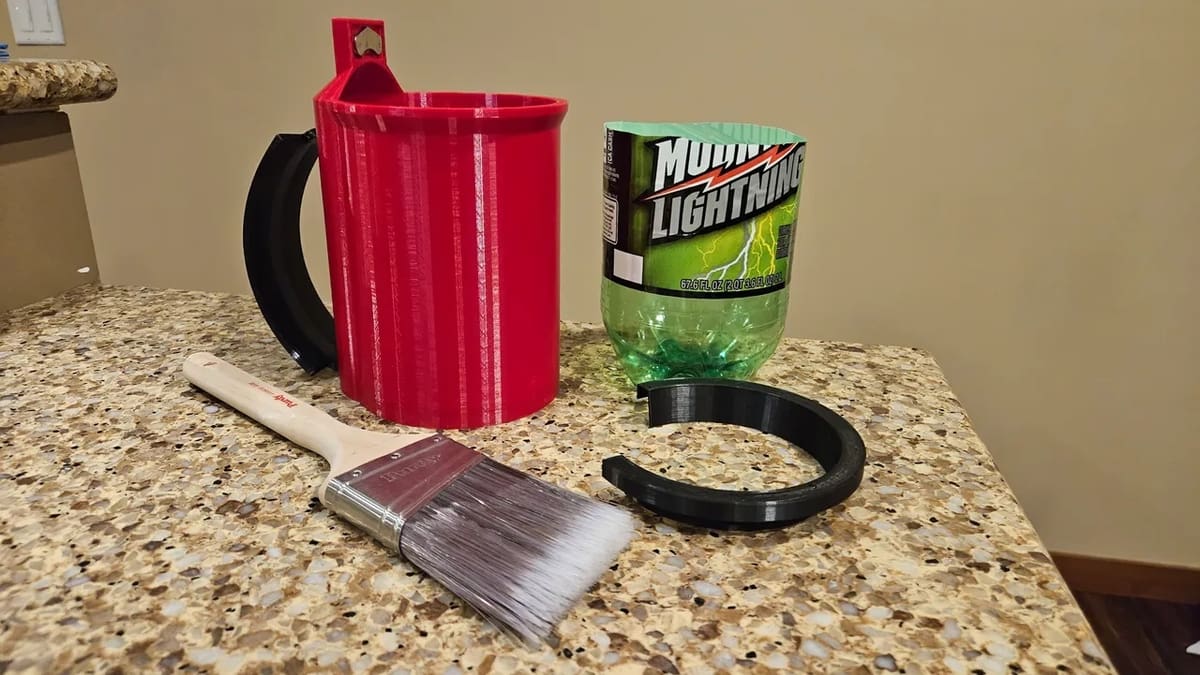
If you’ve ever brushed paint on, you know how irritating it can be to carry the pot around. It’s either heavy and cumbersome or small and with no handle.
This print solves that by turning a 2-liter soft drink bottle into a paint pail with a carrying handle. The handy TPU strap means you won’t slip and spill paint everywhere easily, and the magnetic brush holder can free your other hand for the other little things that need doing between brush strokes (like fixing the masking tape or refilling the pot).
This model requires some assembly and a strong magnet. The strap calls for TPU, so a direct extrusion setup is needed, while the pail and top have been printed with PLA+ by the maker. The pail is quite tall, so a bigger print area will be necessary unless you want to split the design.
- Who designed it? Iceman
- How printable/popular is it? It’s not hugely popular with only 33 downloads and 25 likes, but we think that it would greatly improve your painting experience!
- Where to find it? Printables
Spray Can Handle
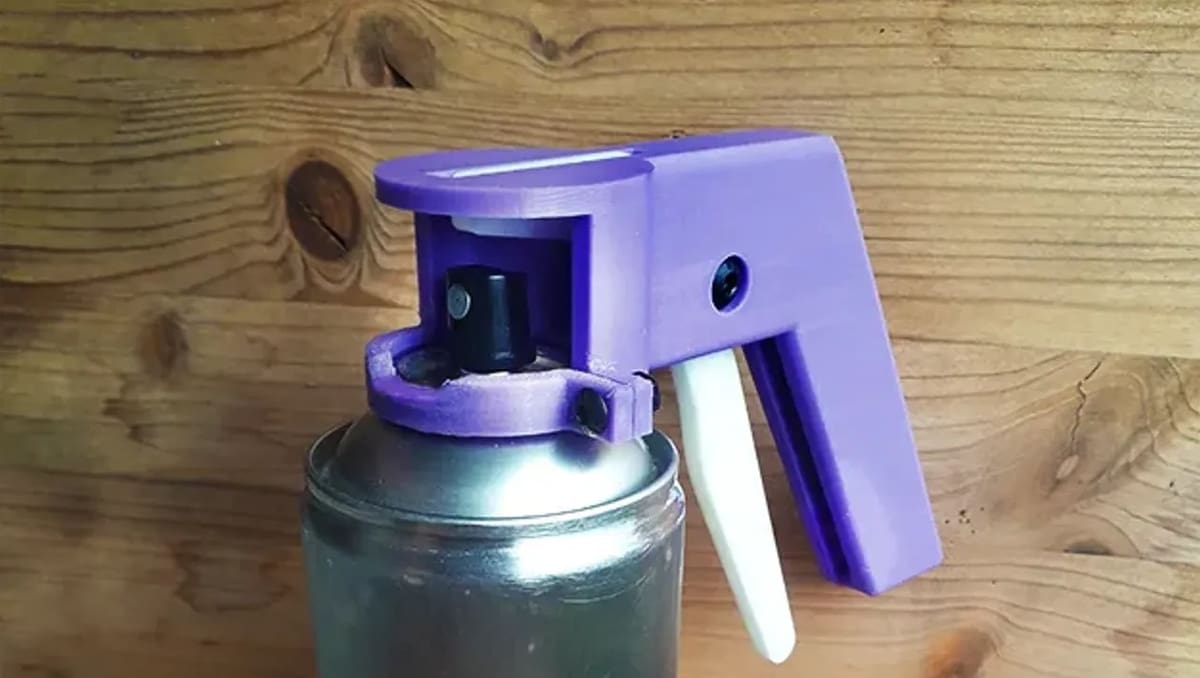
If you’re painting something other than the walls in your house, you may be considering using disposable spray packs. The tiny little nozzle-cap can be rather messy, and if you’re spraying a large area or a lot of items, it might leave you with cramped fingers.
This is where the Spray Can Handle to End Them All comes in. It’s far more ergonomic than the nozzle cap (even the really nice ones from your graffiti art supplier). By adding a handle and a trigger extension, you can keep better control of your spray direction and volume.
This model is one very easy and fairly straightforward print, although supports are recommended. According to the designer, it benefits if you can use some more advanced techniques, such as varying print settings by region. The item needs a little assembly, an M5x15 bolt and nut, and either an M4 bolt and nut or a nylon cable tie.
- Who designed it? Kaishou
- How printable/popular is it? With over 20 makes, around 1,000 downloads, and almost 200 likes, this model is popular as far as painting aids go.
- Where to find it? Printables
Petite Palette

If you’re into painting either miniatures (or really small canvases), this palette is a must! It attaches to your thumb, allowing you to hold your miniature with your palette hand and paint with your other.
The Printables page includes a sizing ring and files for 1-, 3-, and 5-segment palettes, as well as files for each hand. A lid is also included to keep your paints a little fresher while you stop for a break. One maker even commented that you might be able to paint with a brush and palette in each hand…
It’s an easy model that prints flat on the bed. While the majority of people printed this with great success using PLA, if you have the equipment, we recommend printing in ABS and vapor smoothing, as the paint can get caught in layer lines.
- Who designed it? MerganMcFergan
- How printable/popular is it? This undeniably popular design has 23 shared makes and has been downloaded more than 1,500 times, plus it’s been added to over 1,000 collections – it’s been well received by the community, and it’s easy to see why!
- Where to find it? Printables
Airbrush Cyclone
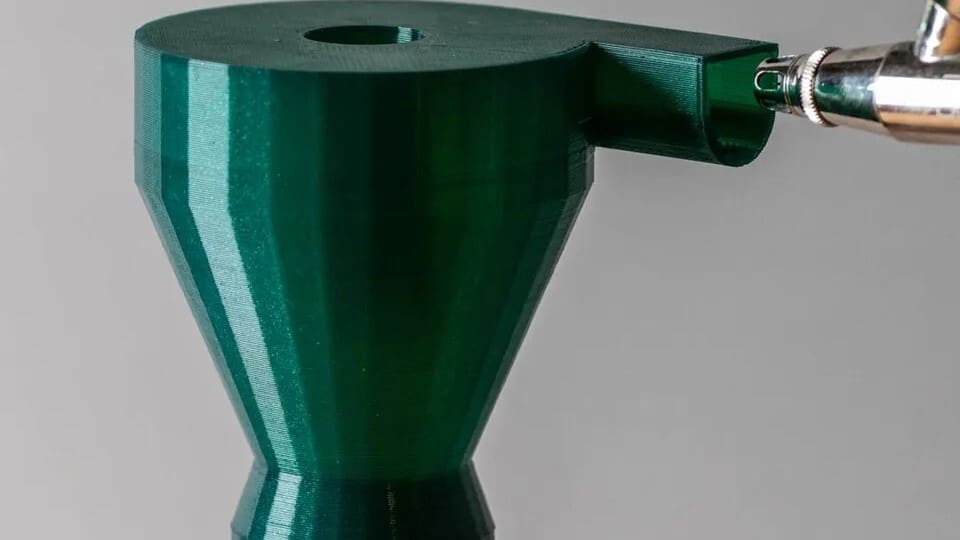
Whenever you change paint or finish spraying for the day with an airbrush (or any paint sprayer really), you need to thoroughly clean the nozzle to prevent clogs or spatters. While with a spray pack you can just hold the can upside-down and spray until you get clean pressurant rather than paint, with an airbrush you need to run solvent (usually water) through the system until there’s no more paint residue inside.
Most people spray this cleaning product into a jar for later disposal, but that’s messy and you end up with paint spattering everywhere around the jar. Enter the Airbrush Cyclone, a device to capture your cleaning fluid and return just clean air! Simply spray through the entry port until the jet is clear.
The cyclone prints in one piece without supports, but the designer recommends avoiding materials with a lot of stringing (hello, PETG), as it’s not possible to remove strings from the internal cavity after printing.
- Who designed it? Gerhard
- How printable/popular is it? This model is reasonably popular, and it can boast of 14 makes and over 800 downloads.
- Where to find it? Printables
Vise Miniature Holder
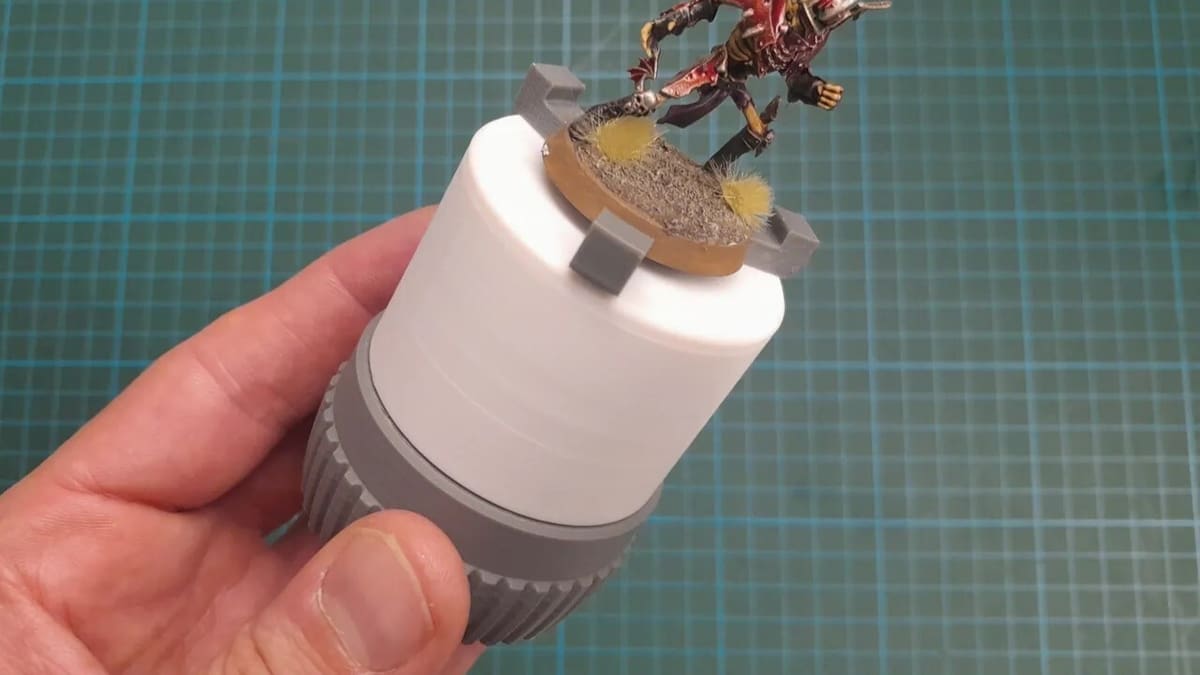
There are many miniature painting handles out there to choose from, so what makes this one different? Well, firstly, it doesn’t use elastic or springs to close the jaws, meaning you’re free to apply as much – or as little – pressure to your miniature as needed. Then there’s the coolness factor.
This handle uses a scroll plate similar to a lathe chuck to achieve the linear motion of the jaws from rotary motion of the handle. This arrangement also provides some mechanical advantage allowing you to grip a little tighter than otherwise. Oh, and there’s no chance of your elastic band snapping halfway through your paint job.
This will be a challenging print due to tight tolerances, and there is some detailed assembly required. The Printables page contains an excellent how to guide on assembly, so why not have a go!
- Who designed it? 3DPrintingDude
- How printable/popular is it? In case the 210 makes don’t convince you of its popularity, the model has been downloaded over 6,100 times.
- Where to find it? Printables
Turn Table Without Bearing
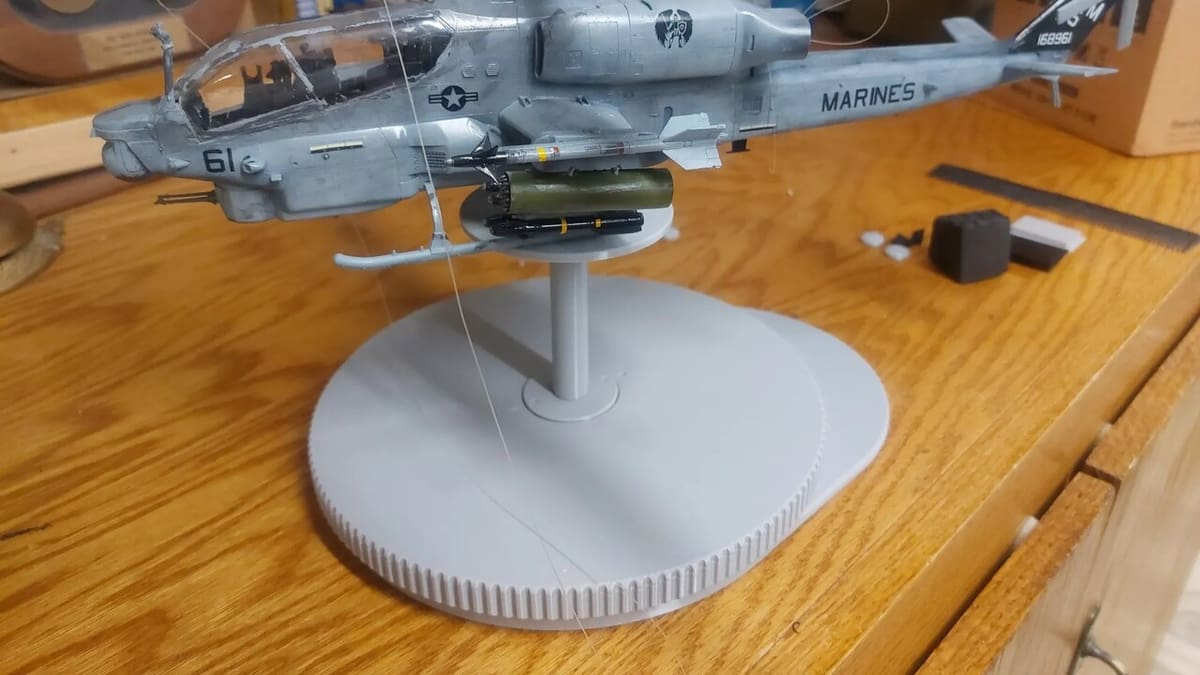
When you airbrush a miniature or piece of an elaborate costume, handling the item to reposition it so you can access the next surface runs the risk of damaging the hard work you’ve already put in.
This handy turntable allows you to rotate your work piece without the need for touching it before the paint dries. Simply place your miniature on the flat table or use a removable adhesive (such as Blu-Tack) to attach something curvier to the ball stand, and away you go.
The model does have some tight tolerances and large flat areas, so a tuned printer will be necessary. That said, assembly is very straightforward and the mechanism isn’t so complex that a little sanding here and there couldn’t compensate for some print artefacts.
- Who designed it? laumaya
- How printable/popular is it? This model is somewhat of a hidden gem, with MakerWorld reporting around 60 makes and over 110 downloads.
- Where to find it? MakerWorld
License: The text of "3D Printed Tools for Painting" by All3DP is licensed under a Creative Commons Attribution 4.0 International License.

